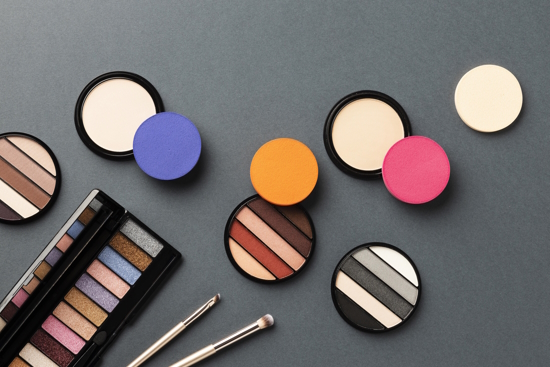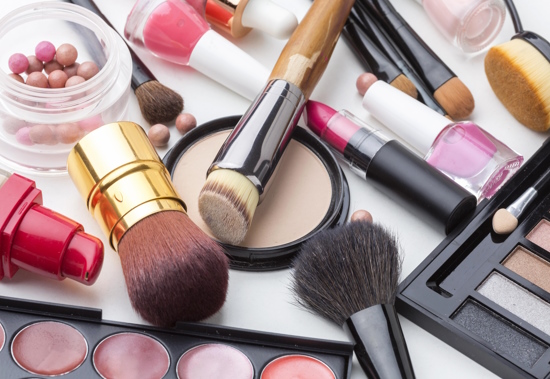Discovering Cosmetic Science: Discover What Active Ingredients Go into Your Favorite Items
Cosmetics have been an integral part of human culture for millennia. From ancient Egyptian eye makeup to modern-day beauty products, cosmetics have played an essential role in our lives. Yet many people don’t fully comprehend the ingredients that go into their favorite cosmetics. In this article, we’ll take a deeper look into cosmetics’ science behind composition and what makes them work.
Part 1: Cosmetic Chemistry 101
Before we explore the specifics of cosmetic ingredients, it’s essential to comprehend some fundamental principles about cosmetic chemistry. Cosmetics are personal care items designed to enhance or alter the appearance of skin, hair or nails and can be divided into several types such as:
Skin care items, such as moisturizers and anti-aging creams
Hair care items like shampoos and conditioners
Makeup products, such as lipstick and mascara, contain a complex mixture of ingredients that work together to produce an aesthetic result. These ingredients may be natural or synthetic and sourced from various sources.
Part 2: Preservatives in Cosmetics
Preservatives are an integral part of many cosmetics products, used to prevent harmful bacteria and microorganisms from growing and spoiling the product. Without preservatives, cosmetics would have a much shorter shelf life and would need replacement more frequently.
However, some cosmetic manufacturers are concerned about the safety of certain preservatives used in products. Parabens have been linked to breast cancer and other health problems; thus, many cosmetic manufacturers now opt for alternative preservatives or don’t use any at all.

Part 3: The Role of Emulsifiers in Cosmetics
Emulsifiers are essential ingredients used in cosmetics to mix immiscible substances such as oil and water and create stable emulsions that won’t separate over time. Without them, many cosmetic items would be impossible to create.
Emulsifiers used in cosmetics range from natural emulsifiers like lecithin to synthetic polysorbates. While some people worry about the safety of synthetic emulsifiers when used at low concentrations, studies have demonstrated they are generally safe when employed this way.
Part 4: Active Ingredients in Cosmetics
Active ingredients are those components of cosmetics that provide a specific benefit to skin, hair or nails. For instance, vitamin C is often an active component used in skin care products due to its antioxidant properties which help shield skin cells from damage.
Cosmetics contain a range of active ingredients, such as vitamins, minerals and plant extracts. Some actives like retinol can cause irritation or sensitivity in certain people so it’s essential to read product labels carefully to make sure you use products with appropriate active ingredients for your skin type.
Part 5: The Role of Fragrances in Cosmetics
Fragrances are employed in cosmetics to give off a pleasant scent. Unfortunately, some people can be sensitive to fragrances and experience allergic reactions when exposed. Furthermore, certain fragrances contain potentially hazardous chemicals like phthalates which have been linked to hormonal disruption.
Many people opt for fragrance-free products or those scented with natural essential oils in order to reduce the potential risks associated with fragrances in cosmetics.
Part 6: The Future of Cosmetic Chemistry
The cosmetic industry is continually developing, with new ingredients and technologies appearing every day. One emerging trend within cosmetic chemistry is the use of “clean” or “green” ingredients which are perceived to be safer and more eco-friendly.
Some cosmetics companies are now turning to plant-based ingredients like coconut oil and shea butter in place of synthetic emollients like mineral oil. Furthermore, natural pigments and dyes have replaced synthetic ones.
Another area of innovation in cosmetics chemistry involves nanotechnology. Nanoparticles are microscopic particles that can penetrate skin cells to deliver active ingredients directly to those that need them, improving efficacy of products while decreasing their amount of necessary active ingredients – potentially reducing irritation or sensitivity risks.
However, there are also concerns about the safety of nanoparticles in cosmetics. Some studies have suggested certain types of nanoparticles can cause cellular damage or even enter into the bloodstream and accumulate over time in the body. As with all cosmetic ingredients, it’s critical to thoroughly research and assess their safety prior to using them in products.

FAQ:
To further deepen our understanding of cosmetics, here are some frequently asked questions:
Q1: Are natural cosmetics products better than synthetic ones?
There is no simple answer to this question, as it depends on the individual ingredients and their properties. Some natural ingredients may be more effective or safer than their synthetic counterparts while others could be ineffective or even hazardous. To determine which product works best for your needs, read labels carefully and do your research.
Q2: Can cosmetic ingredients cause cancer?
A2: In some studies, certain ingredients used in cosmetics – like parabens and formaldehyde – have been linked to cancer risks. Nonetheless, the risk of developing cancer from cosmetics is generally considered low. To minimize your chances of developing cancer from cosmetics, make sure you use products as directed and consult a healthcare professional if you have any worries or questions.
Q3: Can cosmetics ingredients be harmful to the environment?
A3: Some ingredients, such as microbeads and certain preservatives, have been identified as potentially hazardous for the environment. To reduce their effect on our planet, many companies now utilize biodegradable components and packaging, in addition to recycling programs for used items.
Q4: Are cosmetic ingredients tested on animals?
A4: Some cosmetic companies still employ animal testing to verify the safety of their products. However, many more are now turning towards alternative testing methods like computer models and in vitro experiments in an effort to reduce or eliminate animal testing altogether.
Q5: What Should I Look For on a Cosmetics Product Label?
A5: When reading cosmetic product labels, it’s essential to look for ingredients as well as any warnings or instructions for use. If you have any specific queries or worries about the item, consult with a healthcare professional for further advice.
Conclusion:
Cosmetics have become an integral part of modern-day beauty routines, but it’s essential to comprehend the science behind their ingredients. By understanding preservatives, emulsifiers, active ingredients, fragrances and emerging trends in cosmetics chemistry, consumers can make educated decisions about which products they should use. By asking the right questions and conducting research we can all reap the rewards while minimizing potential risks associated with using cosmetics.
